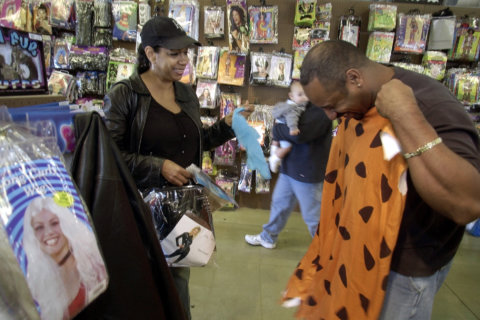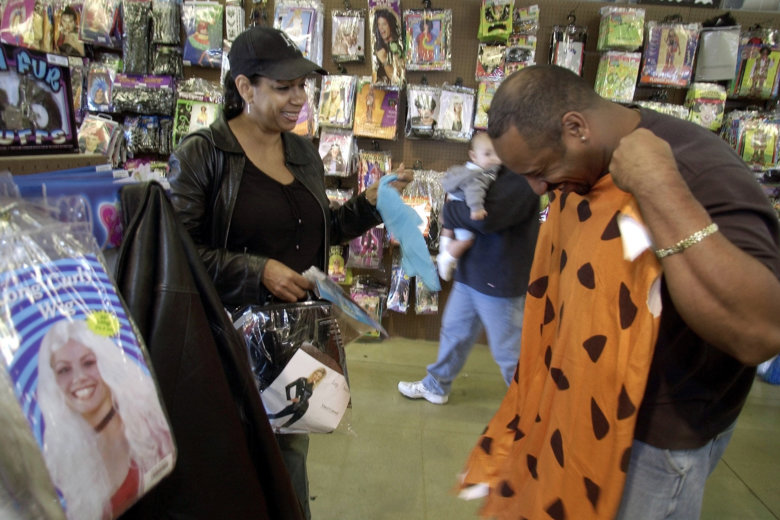
Are you planning to head into work on Halloween dressed as a ghost, a superhero or perhaps the Night King from “Game of Thrones”? If you’re thinking of dressing up for Halloween at work, here’s what you need to know to avoid inadvertently spooking your co-workers, your clients or your boss.
1. If you’re new on the job, ask about your office’s Halloween traditions ahead of time. Otherwise you risk showing up decked out head to toe as a block of cheese or a bloody zombie, fake brains oozing from your head, while your co-workers are all in their usual business clothes. It takes a strong ego to sit in a business meeting dressed in an elaborate costume while everyone else is wearing suits and trying to understand what you’re saying through your mask.
2. Be thoughtful about whether a costume really makes sense for the type of work you do. Plenty of workplaces accommodate costumes easily, but in others dressing up would be out of place or even insensitive. For example, if you work in a hospital and might have to give difficult news to a patient’s family, you want to be dressed professionally for that conversation. Even in situations where the stakes aren’t as high, if you regularly deal with stressed or upset people, a costume might not be a wise choice for your work.
Make sure, too, that you’ll be able to physically do the work you’ll need to do that day. If you normally do a lot of typing on a computer, a dolphin costume with flippers for hands is going to sink your productivity and make it hard to get anything done. Similarly, if you do a lot of physical labor, like lifting and carrying things, pick a costume that you can easily move around in and won’t sideline you for the day.
Apply these same rules to any office decorations as well. You don’t want to give someone difficult news at a desk covered in fake spider webs and flashing orange lights while a soundtrack of spooky music plays in the background.
3. There’s nothing wrong with simple costumes. When in doubt, it can make sense to err on the side of keeping it simple. For example, you could be well-dressed Kate Middleton, or Leslie Knope from “Parks and Rec,” or pretty much any character from “The Office.” If you really want to be low-key, you could just pop in a pair of vampire fangs or throw on a witch hat. You can always go all-out with a more elaborate costume after work if you want to.
4. Keep it work appropriate. Not every rule of office-appropriate dress goes out the window just because it’s Halloween. Like the other days of the year, you shouldn’t wear anything that’s revealing or sexually provocative — so no naughty nurse costumes or sexy cat outfits. Whatever body parts and amount of skin you keep covered on other work days, keep them covered on Halloween, too.
You also shouldn’t wear a costume that could come across as making light of deeply serious issues. Your goal here is to have fun, not offend your co-workers or make people uncomfortable about working with you.
And don’t wear a costume that plays on racist or ethnic tropes, like caricatures of another ethnic group. Most people these days know that blackface is offensive, but there’s still a startling number of Native American, Eskimo and geisha costumes out there. If you’re thinking of using someone else’s culture as a costume, steer clear. You risk offending or alienating colleagues — which is the opposite of what celebrating a holiday together is supposed to do.
5. Enjoy Halloween, but recognize that not everyone may participate — and that’s OK. By all means, go all out if you enjoy Halloween and it’s appropriate for your office. But if you notice that some of your co-workers didn’t dress up or otherwise aren’t joining in the celebration, don’t give them a hard time about it. Not everyone enjoys dressing up and not everyone can or wants to eat candy. Moreover, some people may have religious reasons for not participating. Celebrate with those who want to celebrate, and go easy on anyone who doesn’t.
5 Rules for Halloween Costumes at Work originally appeared on usnews.com








